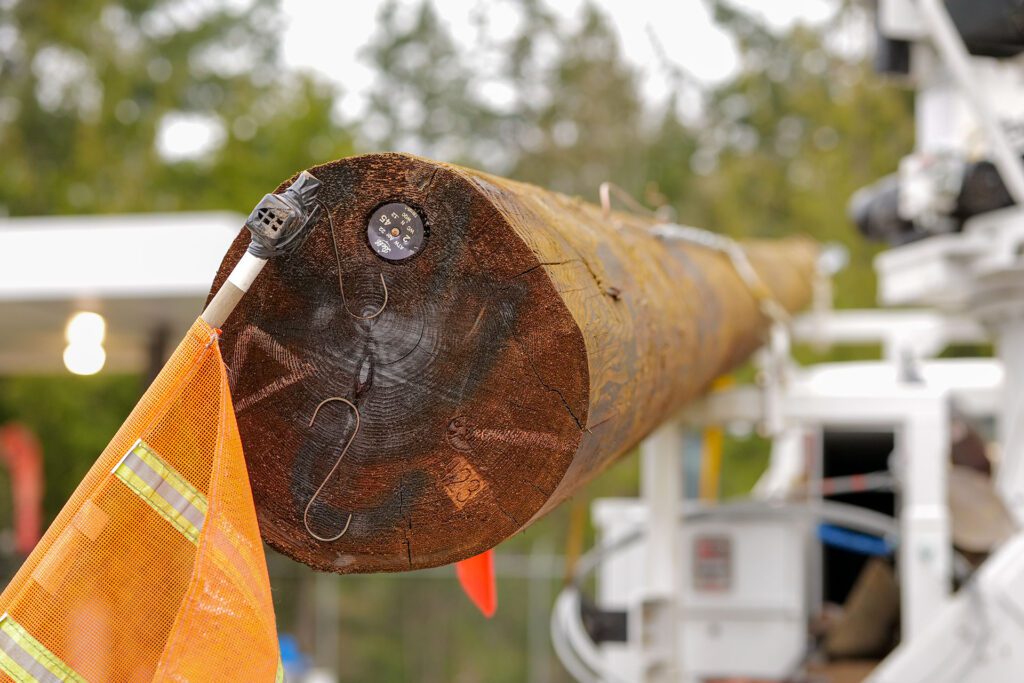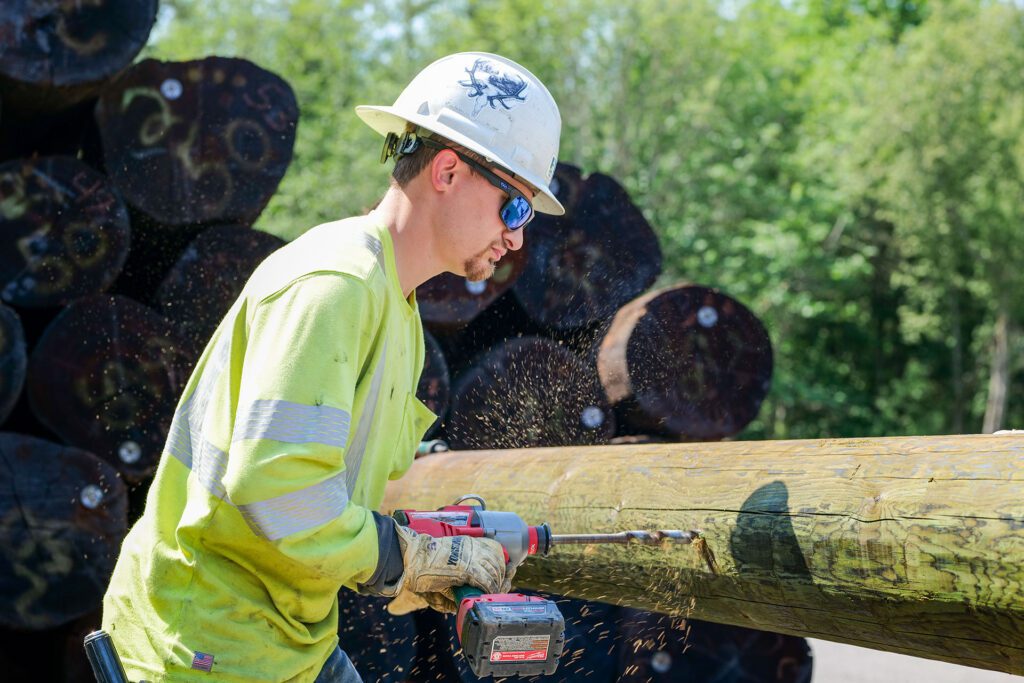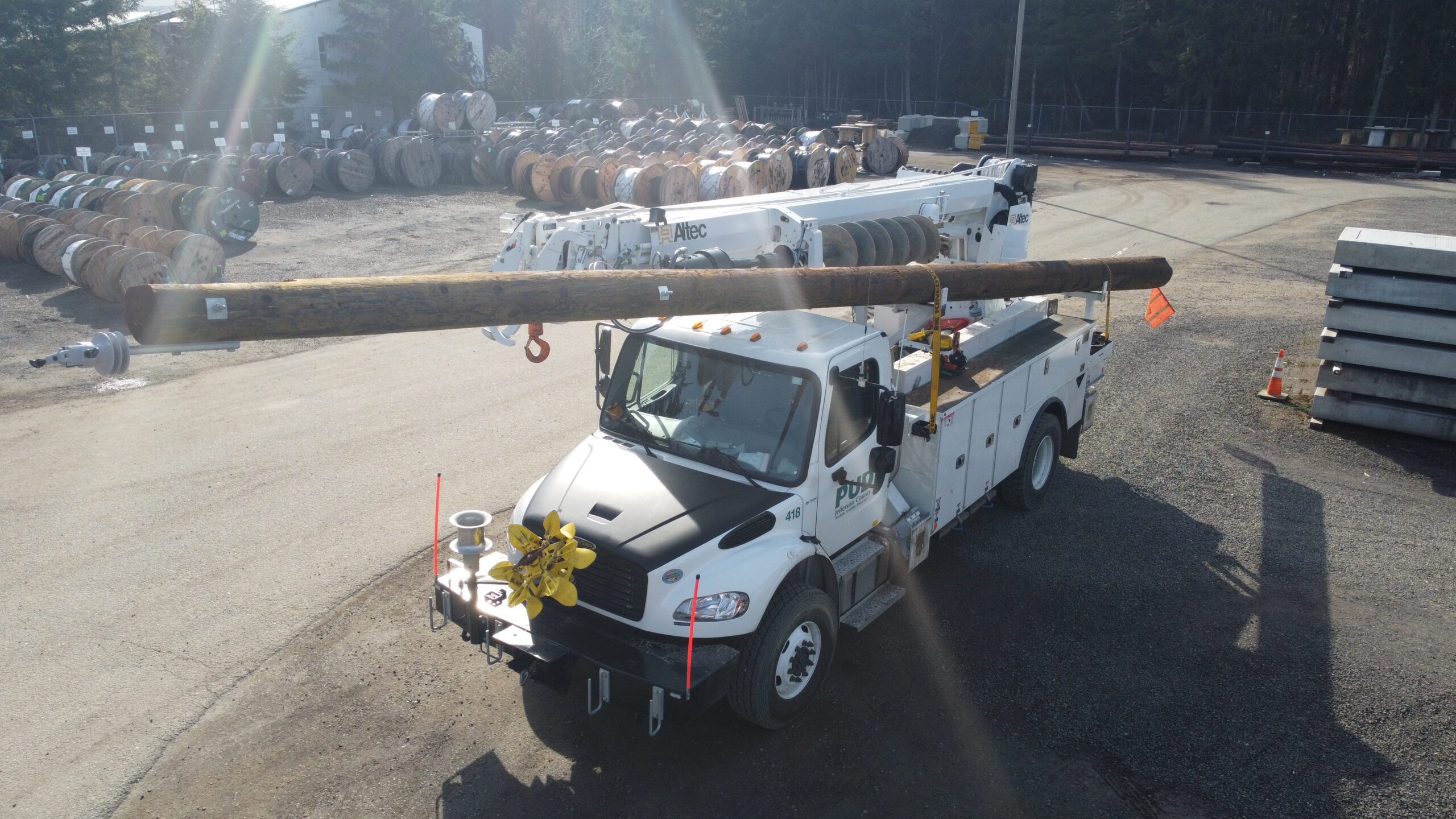Supporting our Grid: Utility Poles
There are approximately 8,940 poles stoically supporting more than 400 miles of overhead PUD lines countywide.

Utility poles are designed to handle much of what mother nature dishes out. Rain, ice, even bugs and fungi—poles get attacked on all fronts, all year long, but thanks to modern preservatives and proper selection poles can have a life span of at least 50 years.
Poles and their crossarms are infused with preservatives to prolong their lifespan. All preservatives used are approved by the U.S. Environmental Protection Agency (EPA).
Wooden poles are typically Douglas fir, southern yellow pine, red pine, or red cedar and are selected based upon length, straightness, and taper. Selected poles are graded and grouped together to be placed inside a chamber called a ‘retort’. Inside, preservative is applied through either a vacuum process or by air pressure. The result is a pole saturated to the heart wood (center of the pole).

It’s essential to thoroughly saturate a pole, as placement of crossarms and other utility equipment require drilling through the center of a pole, exposing area to potential weathering.
You are where you’re planted
Utility poles are often buried 6’ or deeper–a depth at which groundwater can be an issue.
Pole testing surveys are conducted annually, with approximately 10% of the PUD’s poles receiving a grading each season. During testing, contractors identify hazard poles in need of replacement. Learn more about the pole testing process here.
The PUD stocks utility poles of various size at its yard facility. Storms, vehicle accidents, bucking (damage caused by the weight of a line producing a whip-like effect that breaks nearby poles), and hazard pole replacements all require a supply of poles on-hand. Larger transmission poles are often custom ordered.
